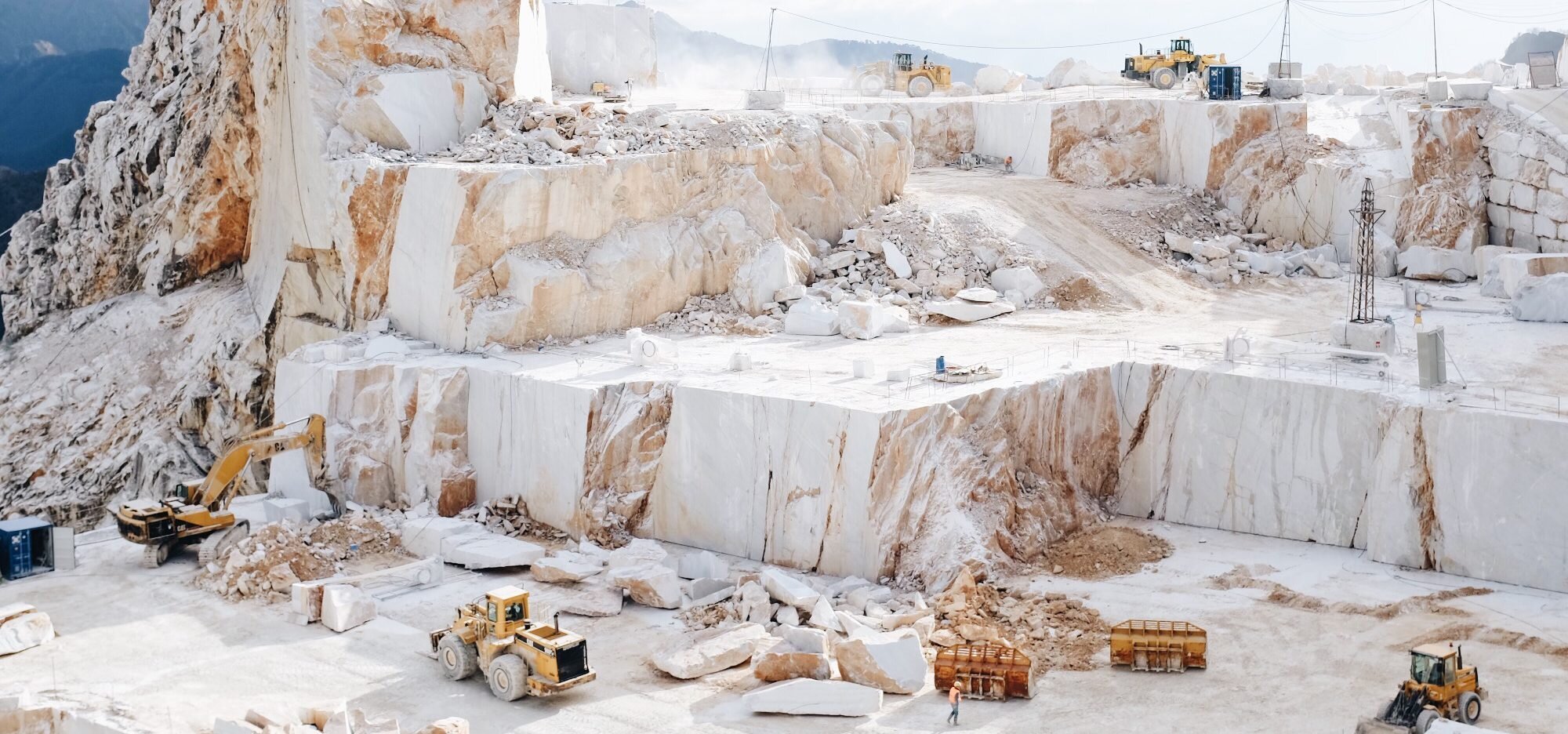
Experience the beauty of natural stone.
Granite
Granite is one of the earth’s strongest materials. It’s a popular choice as a natural stone countertop material because the sharpest knives won't scratch it and a bubbling pot won't mar it. Granite is available in hundreds of colors both bold and muted, including shades of white, black, gray, green, blue, red, pink, yellow and tan. Every lot possesses its own mineral makeup with distinct patterns that make each slab a unique work of art.
Limestone
Limestone is well-known for its aesthetic appeal. Make a statement in your design project by adding a unique limestone countertop or accent wall. People often choose limestone because of the large variety of colors and styles. This type of stone can be used indoors and outdoors because it is heat resistant. Whether it is the heat from hot pans or the sun, you can depend on limestone to withstand high temperatures.
Marble
Marble is a type of metamorphic rock that is known for its beauty and unique patterns. Marble adds a sophisticated element to your home. It's wonderful appearance, superior engineering characteristics, and ease of maintenance makes it a natural choice for floors, wall coverings, fireplace facing and hearth, table tops, and bathroom walls, floors, vanity tops, tub decks, and showers.
Quartzite
Quartzites are metamorphosed sandstones formed deep in the earth due to high temperature and pressure. They are harder than Quartz, Granite, and even steel. Compared to granites these stones have very fewer color variations such as white and gray, with black and brown tinges. But color variations do occur due to the chemical elements such as pink (iron), green (copper), pink, red, blue, green, yellow, or orange. A great choice for kitchen stonework, Quartzites are highly durable and look fantastic with their calming colors and flow textures.
Soapstone
Soapstone is made up of two mineral substances: talc, which gives it its “soapy” feel and magnesite, along with small amounts of other minerals including quartz. Soapstone has at least 50% talc and has been metamorphosed into stone by heat, pressure, and time. Soft, carveable artistic soapstone has a high talc content. Artists often use this kind of soapstone to carve small figurines. Harder architectural soap stone contains 60-75% talc and is used for a range of applications, including sinks, countertops, floors, and hearths.
Travertine
Travertine, a warm honey-colored natural stone quarried for thousands of years, is suitable for a variety of architectural styles and is recognized for its timeless beauty. Because travertine was abundant, less weight than marble or granite, and comparatively easy to quarry, it was the natural stone most frequently used by the ancient Romans in famous architectural structures such as the Colosseum, the Trevi Fountain, and many aqueducts. The fact that these structures still stand, although obviously weathered by time, attests to travertine’s great resistance and strength.







